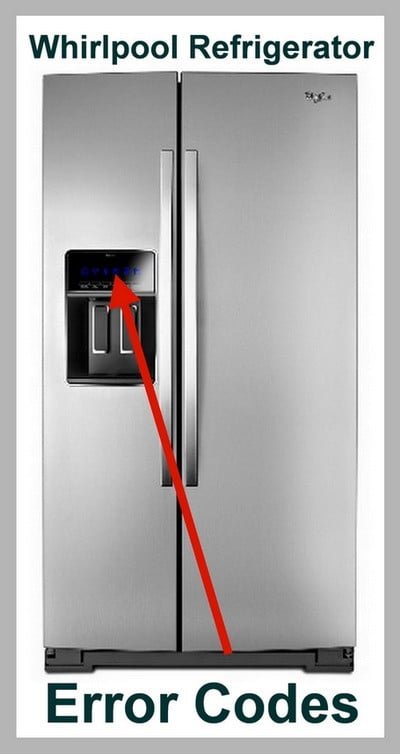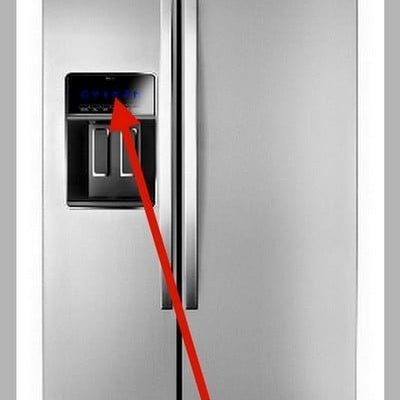
Let’s break it down. When your Whirlpool refrigerator flashes an error code like “OE”, it’s basically trying to communicate that something’s not quite right. Think of it like your car’s check engine light—while it might still drive, there’s a possibly growing problem that could get worse if not addressed. In the context of refrigerators, the “OE” code often relates to drainage or overflow issues. Ignoring it might not seem like a big deal right away, but just like ignoring a leaky tap, it could lead to bigger messes down the road.
Understanding the OE Error Code
The “OE” error code is a gentle nudge from your refrigerator saying, “Hey, something’s off with my drainage system!” Much like a bathtub that can’t drain properly, if the water can’t exit your refrigerator as designed, it can start to pool where it shouldn’t. This can lead to internal leaks or even water collecting at the bottom of your fridge. Just like the surprise of finding water on your kitchen floor after a bath overflow, a fridge with drainage issues can create an unexpected splash.
OE typically indicates a problem with the water that’s supposed to be draining from your fridge. This could be due to a blocked or frozen drain tube. Imagine a straw that’s pinched or clogged; liquid just can’t flow through properly. The same principle applies here. Your appliance is telling you that it’s time to play detective and maybe do a little cleaning or thawing.
Ignoring this problem might seem easier, especially if everything else seems to be working fine. But, letting it slide could lead to water collecting at the bottom of your refrigerator, which increases the risk of mold, odors, and potential damage to the appliance. In essence, it’s not just a question of moisture control; it’s about keeping your appliance in tip-top shape.
Common Causes of the OE Code
So, what’s behind the “OE” error code curtain? There are a few usual suspects. One of the more frequent culprits is a clogged defrost drain. Over time, bits of food or ice can obstruct this path, similar to leaves piling up in a gutter, blocking water’s exit route. Consequently, water has nowhere to go but back into the fridge.
Another possibility is a frozen drain tube. Sometimes, the drain tube might become frozen due to mishaps in the defrost cycle. It’s akin to a frozen garden hose in the winter; when frozen, it can’t move water to where it needs to go. This occurs because water that should drain away instead builds up and freezes, creating a backlog.
Additionally, there could be issues with the drain itself or the refrigerator’s defrost mechanisms. Perhaps the defrost heater isn’t working properly, preventing the ice from melting as needed, or maybe the fridge isn’t level, causing water to pool instead of draining correctly. These issues all contribute to the appearance of the “OE” code, each one a piece of the puzzle in need of solving.
Steps to Address the Error
When faced with the “OE” error code, your first thought might be, “Can I fix this myself?” The answer is a resounding yes! You can often troubleshoot this issue without needing a technician. The first step is to check the defrost drain for blockages. This might require removing a panel to access it, so be sure you’re comfortable with minor disassembly.
If you find the drain tube is clogged, gently clean it out with warm, soapy water and a bit of patience. A bit like untangling a stubborn knot, it might take a few tries, but persistence pays off. If the tube’s frozen, unplug your fridge and allow it to thaw out. You can speed things up with a little warm water if needed, just like melting ice in your freezer.
Once you’ve cleared the blockage or thawed the ice, turn your fridge back on and see if the error code disappears. If it’s gone, you’ve successfully tackled the issue! If it persists, it might be time to call in a professional. In the meantime, ensuring that your refrigerator is properly leveled and regularly maintained can help prevent future occurrences.
Preventive Tips to Avoid Future Errors
Wouldn’t it be nice if these error codes never appeared in the first place? Just like regular oil changes can keep your car running smoothly, a bit of routine maintenance can do wonders for your fridge. Start by regularly checking and cleaning the defrost drain. A quick inspection every few months can save you a lot of hassle down the road.
Keep your refrigerator balanced and ensure its temperature settings are appropriate. If the fridge is too cold, your drain system is more prone to freezing up. Think of it like keeping your house at a comfy temperature—too hot or too cold, and things just don’t function optimally.
Lastly, remember that the best offense is a good defense. Make sure the seals on your refrigerator doors are in good condition to help maintain the correct temperature and prevent excess condensation. With these simple steps, you can help keep your fridge error-free and running smoothly, ensuring it remains your dutiful kitchen companion for years to come.
